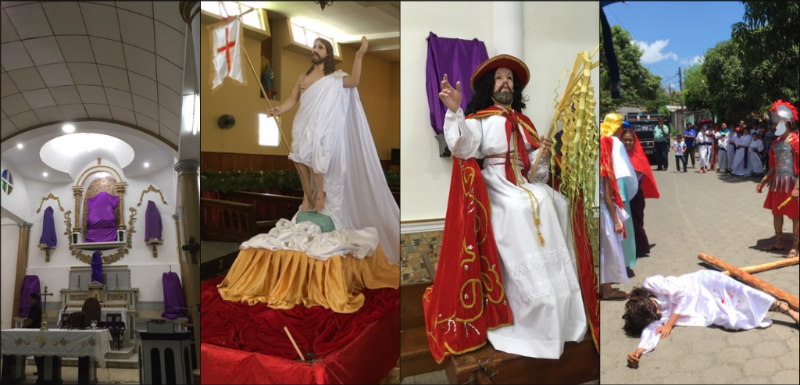It’s noticeable that the Easter Holiday is over. There are more cars around, there is more general noise in the air. The week before Easter is Holy week, la Semana Santa. During Holy Week schools are closed and there are two Public Holidays on Maundy Thursday and Good Friday which means no bus services and closed shops. The days before Easter are more important than Easter Day itself.
Holy Week coincides with the warm part of the year, in Juigalpa around 35C. People try to cool down in the lake, the river or the swimming pool in their neighbourhood or participate in the religious activities of the churches. There are many processions and colourful remembrances of Jesus’ last week before he died.
The Sunday before Easter is Palm Sunday, celebrated by a procession with palm branches to celebrate that Jesus is King (see picture). During the Maundy Thursday church service the feet of the presiding priests are washed; on Good Friday there is a procession along the Stations of the Cross. Younger people are actively engaged, acting out some of the scenes described in the bible, while the stories of the stations of the Cross are read (see pictures). The procession ends with the scene of the cruxifiction. On Saturday there is the Easter Vigil in preparation for Easter Day, the day that concludes the festivities with an Easter Mass.
During Holy Week the focus is on contemplation and is usually accompanied by special meals that exclude meat. Easter fires are part of the tradition, but Easter bunnies, Easter eggs and other Easter delicacies are not. The jubilation of Easter, the Alleluia, is not strong. Probably people identify themselves more easily with Jesus’ suffering, as life in Nicaragua lacks the basic social securities, and life for many is a struggle to make ends meet.
The Holy Week has passed. Buses are driving again and daily life resumes its usual rhythym. We hope that many in Nicaragua and our readers abroad will have been inspired and rested by the lived-through experiences of this special week!



